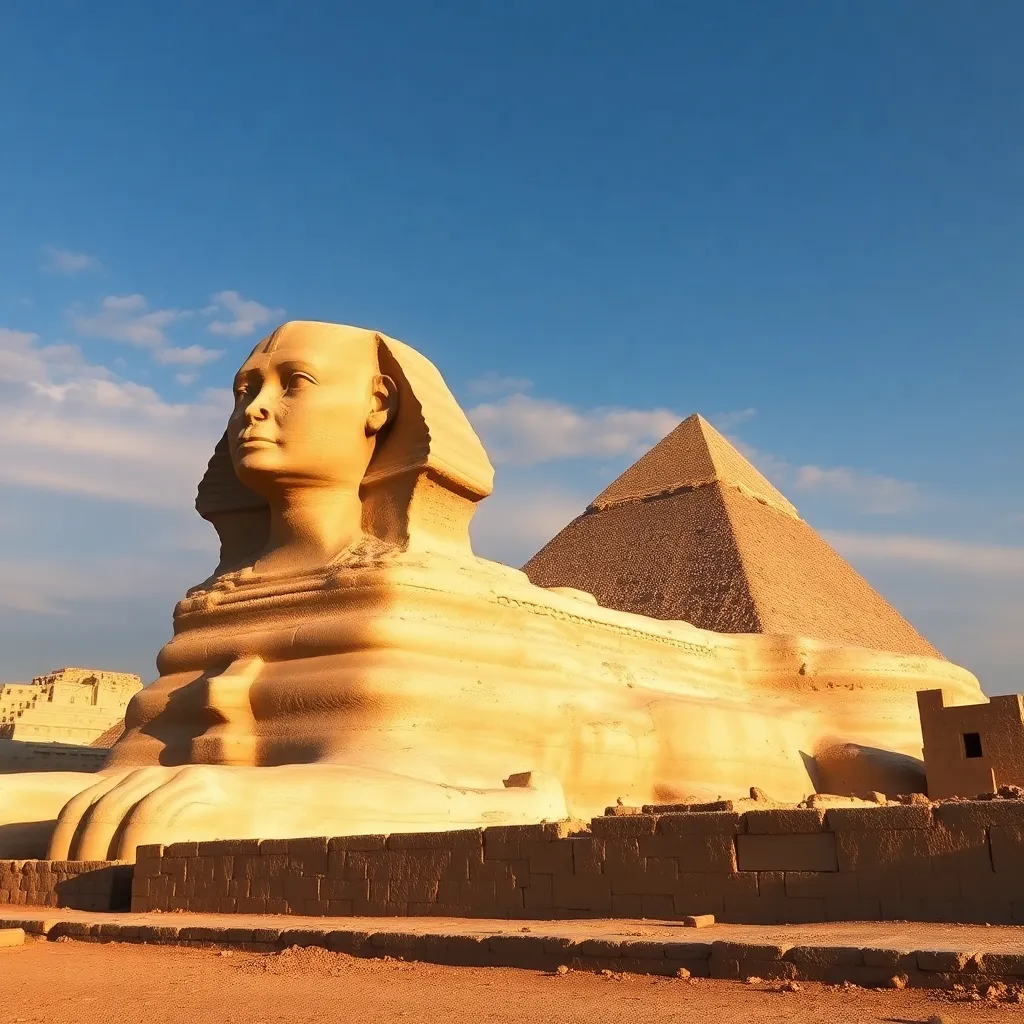Who Built the Sphinx? Legends and Theories Explored
I. Introduction
The Great Sphinx of Giza, an iconic symbol of ancient Egypt, has captivated the minds of historians, archaeologists, and tourists alike for centuries. This colossal limestone statue, with the body of a lion and the head of a pharaoh, stands as a testament to the architectural prowess and cultural richness of ancient Egyptian civilization.
Understanding the origins of the Sphinx is crucial not only for appreciating its historical significance but also for unraveling the mysteries that surround its construction and purpose. This article aims to explore various theories and legends regarding who built the Sphinx, delving into historical contexts, traditional attributions, alternative theories, and more.
II. Historical Context
The construction of the Sphinx is believed to date back to the Old Kingdom of Egypt, around 2500 BC, during the reign of Pharaoh Khafre. This period is marked by remarkable achievements in art, architecture, and governance, contributing to the establishment of one of the world’s most influential civilizations.
Ancient Egypt was characterized by its advanced understanding of engineering and mathematics, which allowed for the construction of monumental structures. The Sphinx, along with the nearby pyramids, showcases the architectural advancements of the era, including:
- Precision stone-cutting techniques
- Complex planning and design processes
- Innovative use of materials
III. Traditional Attribution
Traditionally, the Sphinx has been attributed to Pharaoh Khafre, the son of Khufu, who is best known for the Great Pyramid of Giza. This attribution is supported by several pieces of archaeological evidence:
- The proximity of the Sphinx to Khafre’s pyramid complex
- Inscriptions and artifacts found in the area that reference Khafre
- The stylistic similarities between the Sphinx and other statues from Khafre’s reign
Additionally, the relationship between the Sphinx and the pyramids is significant. The Sphinx is often considered a guardian of the Giza plateau, symbolically protecting the tombs of the pharaohs. Its alignment with the pyramids raises questions about the religious and cultural beliefs of the time.
IV. Alternative Theories
Despite the traditional attribution to Khafre, several alternative theories suggest that the Sphinx may have been built earlier or by different figures:
- Some researchers propose that the Sphinx predates Khafre’s reign and may have been constructed during the Third Dynasty.
- There are claims that other civilizations, such as the Nubians or even ancient civilizations from beyond Egypt, were involved in its construction.
Proponents of these theories often cite geological studies and erosion patterns on the Sphinx that suggest a much older date of construction, possibly linked to a time of significant rainfall in the region.
V. Legends and Myths Surrounding the Sphinx
The Sphinx has not only been a subject of historical inquiry but has also inspired a wealth of legends and myths. In ancient Egyptian mythology, the Sphinx was often associated with the sun god Ra and the concept of protection.
Throughout history, various folklore and stories have emerged, including:
- Legends of the Sphinx as a guardian of knowledge, posing riddles to travelers.
- Myths surrounding its mystical powers and its role in the afterlife.
The symbolism of the Sphinx extends beyond Egypt, influencing various cultures. It is often seen as a symbol of mystery, strength, and guardianship in different contexts.
VI. Modern Archaeological Discoveries
In recent years, archaeological discoveries and technological advancements have shed new light on the Sphinx and its origins. Excavations around the Giza plateau have revealed:
- New artifacts that provide insights into the daily lives of those who built and worshipped at the Sphinx.
- Advanced imaging techniques that have allowed researchers to explore the interior of the Sphinx without excavation.
These modern discoveries challenge existing theories and suggest that our understanding of the Sphinx’s history may continue to evolve, as new evidence emerges.
VII. The Sphinx in Popular Culture
The Sphinx has transcended its historical context to become a powerful symbol in popular culture. It has been depicted in literature, film, and art, often representing mystery and the unknown. Notable mentions include:
- Literary works that reference the Sphinx as a metaphor for enigma and wisdom.
- Films that incorporate the Sphinx into narratives of adventure and discovery.
The enduring fascination with the Sphinx reflects its status as a cultural icon, influencing modern interpretations of history and the allure of ancient mysteries.
VIII. Conclusion
In summary, the question of who built the Sphinx remains an open debate, with traditional attributions to Khafre coexisting alongside alternative theories that suggest earlier constructions or involvement from other civilizations. The Sphinx stands as a monumental testament to ancient Egyptian culture, embodying both architectural genius and rich mythology.
The ongoing exploration of the Sphinx’s origins is not just an academic pursuit; it is a journey into understanding human history and the civilizations that shaped it. As new discoveries unfold, the significance of the Sphinx in our collective consciousness continues to grow, reminding us of the enduring legacy of ancient Egypt.




